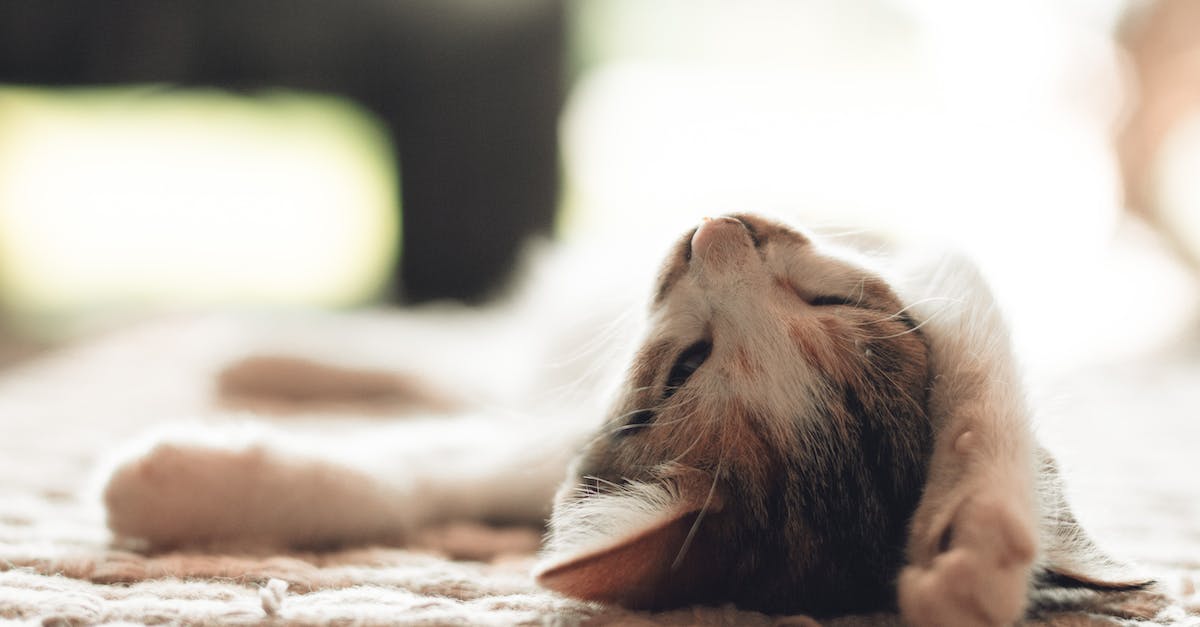Business
5 Tips for Introducing a Kitten to a Dog: A Smooth Transition Guide
Discover the secrets to introducing a new kitten to your dog in a way that ensures a harmonious transition. This article explores the importance of gradual introductions, positive reinforcement, and familiarizing the pets with each other’s scent. Learn how to create a stress-free environment by supervising interactions, choosing a neutral territory, and rewarding positive behavior. Watch for signs of progress, like curious behavior and relaxed body language, while also identifying situations that may require intervention, such as aggression or fearfulness. Don’t
Published
1 year agoon

If you’re a pet lover like me, you may find yourself in a situation where you have a new addition to the family – a fluffy little kitten and a loyal, four-legged companion. Introducing a kitten to a dog can be an exciting but also a nerve-wracking experience. Will they get along? Will there be hissing and barking? Well, fear not! In this article, I’ll share some tried and true tips on how to introduce a kitten to a dog, ensuring a smooth and harmonious transition for everyone involved. So, let’s dive in and make this introduction a pawsitively delightful experience!
Understanding the Dynamics of Cats and Dogs
Introducing a new kitten to your dog can be an exciting but also nerve-wracking experience. As pet owners, we want to ensure a smooth and harmonious transition for everyone involved. Understanding the dynamics between cats and dogs is crucial for creating a positive and delightful experience during their introduction.
1. Recognize their nature
Cats and dogs have different communication styles and instincts. Dogs are social animals, often seeking the company of their human family and other pets. They are known for their loyalty and desire to please. On the other hand, cats are more independent and territorial by nature. They rely on their scent and body language to establish boundaries and communicate with others.
2. Take note of their body language
Before introducing your new kitten to your dog, it’s important to observe and understand their body language. A wagging tail or relaxed posture in a dog indicates friendliness, while a stiff tail or raised hair may signal aggression or fear. Cats may exhibit ear flattening, puffing up their fur, or hissing when they feel threatened or uncomfortable.
3. Gradual introductions
To ensure a successful introduction, it’s best to start with gradual introductions. Keep the kitten and dog separated initially, allowing them to become familiar with each other’s scent. This can be done by swapping bedding or using a blanket to transfer their scents. Gradually introduce them through a baby gate or crack in the door, where they can see each other without direct contact.
4. Supervised interactions
Once both the kitten and dog have become accustomed to each other’s presence, you can proceed with supervised interactions. Keep the first few meetings short and positive, providing treats and rewards for calm behavior. If any signs of tension or aggression arise, separate them immediately and reassess the situation.
5. Create safe spaces
Having designated safe spaces for both the kitten and dog is essential. These spaces should be separate and provide each pet with their own comfort and security. This will allow them to retreat whenever they feel overwhelmed or need some alone time.
By understanding the dynamics between cats and dogs, you can lay the foundation for a successful introduction. Remember to take it slow, observe their body language, and create a safe environment for both pets. With time, patience, and positive reinforcement, your kitten and dog can form a strong bond and become lifelong companions.
Preparing Your Home for a New Addition
When bringing a new kitten into your home, it’s important to make sure that it is a safe and welcoming environment for both the kitten and your dog. By preparing your home in advance, you can help to alleviate any potential stress or conflicts that may arise during the introduction process. Here are a few tips to help you get started:
1. Create separate spaces: One of the first steps in preparing your home is to create separate spaces for your kitten and dog. This will allow each pet to have their own safe space to retreat to when needed. Providing cozy beds, toys, and scratching posts in these spaces can help to make them feel comfortable and secure.
2. Properly secure the environment: It’s important to make sure that your home is safe and secure for both your kitten and dog. This means properly securing windows and doors to prevent any potential escapes. Additionally, make sure to remove any hazardous objects or substances that could pose a danger to your pets.
3. Introduce scent swapping: A successful introduction relies on familiarizing your pets with each other’s scent. Before the actual face-to-face introduction, take a cloth and gently rub it on your kitten, then rub it on your dog, and vice versa. This will help them become accustomed to each other’s scent, creating a sense of familiarity and reducing potential territorial behaviors.
4. Prepare for supervised interactions: Once your home is prepared and your pets are familiar with each other’s scent, it’s time to move on to supervised interactions. Start with short, controlled sessions where both pets are on leashes or separated by a baby gate. Gradually increase their exposure to each other, always watching closely for any signs of stress or aggression.
5. Stay calm and positive: Cats and dogs are highly perceptive animals, and they can pick up on your emotions. It’s important to stay calm and positive throughout the introduction process. Your pets will take cues from you, so if you remain relaxed and confident, they are more likely to feel at ease with each other.
Creating Separate Spaces for the Kitten and the Dog
When introducing a new kitten to a dog, it’s important to create separate spaces for each pet. This allows them to have their own territory where they can feel safe and secure. By establishing these separate spaces, you can help avoid any potential territorial disputes or conflicts between the two animals.
Here are a few tips on how to create separate spaces for the kitten and the dog:
- Designate specific areas: Assign specific areas of the house for each pet, such as a separate room or a designated corner. Make sure these spaces are comfortable and provide all the necessary essentials for each pet, including bedding, food, and water bowls, litter boxes, and toys.
- Use baby gates or pet doors: To physically separate the pets, you can use baby gates or install pet doors. This allows them to see and hear each other without having direct contact, gradually getting them accustomed to each other’s presence.
- Provide vertical spaces: Cats love to climb and perch on high surfaces. Installing cat trees or shelves in the designated area for the kitten can give them a sense of security and help them feel more at ease. Dogs, on the other hand, may benefit from having their own cozy bed or crate in a separate space.
- Create visual barriers: If necessary, you can use dividers or curtains to create visual barriers between the two pets. This can help prevent any unnecessary stress or territorial behavior while they are getting used to each other.
- Rotate access to common areas: Once both the kitten and the dog have become more comfortable in their separate spaces, you can gradually introduce them to shared areas of the house. Start by allowing each pet supervised access to the common areas at different times of the day, gradually increasing their exposure to each other.
Remember, creating separate spaces for the kitten and the dog is an essential step in ensuring a smooth introduction process. It allows each pet to feel secure and helps to minimize any potential conflicts that may arise. By gradually introducing them to shared spaces, you can help foster a positive relationship between your pets and set the foundation for a harmonious coexistence.
Introducing the Kitten’s Scent to the Dog
When it comes to introducing a new kitten to a dog, one of the crucial steps is familiarizing the pets with each other’s scent. By doing this, you allow the dog to become accustomed to the kitten’s presence before any direct interactions take place. This can help minimize stress and potential conflicts during the introductions. Here are a few tips on how to introduce the kitten’s scent to the dog:
- Scent Swapping: Start by swapping scents between the kitten and the dog. This can be done by rubbing a cloth on one pet and then allowing the other pet to smell it. Alternatively, you can use a pheromone diffuser designed to create a calming environment for both pets.
- Exchange Beddings: Switching the bedding between the kitten and the dog can help them get used to each other’s scent even more. This can be done by placing the kitten’s bedding near the dog’s sleeping area and vice versa. The goal is to make the scent of each pet familiar to the other.
- Shared Toys and Blankets: Another effective way to introduce the kitten’s scent to the dog is by having both pets share toys and blankets. By doing this, the pets will start associating each other’s scent with positive experiences, such as playtime or naptime. Make sure to observe the pets during these interactions to ensure they remain calm and comfortable.
Remember, introducing the kitten’s scent to the dog is a crucial step in the process of acclimating them to each other. By allowing the dog to become familiar with the kitten’s scent, you are laying the foundation for a positive and harmonious relationship between the two pets.
Supervised Face-to-Face Introductions
Once your dog and kitten have become familiar with each other’s scent through scent swapping, exchanging bedding, and sharing toys and blankets, it’s time to move on to supervised face-to-face introductions. This is an essential step in establishing a positive and harmonious relationship between your new kitten and your dog.
During the initial interactions, it’s important to have both pets under control and on a leash or in separate enclosures. This will prevent any potential accidents or aggressive behavior from occurring. Additionally, it allows you to guide the introductions and step in if necessary.
Here are a few tips for a successful face-to-face introduction:
- Choose a neutral territory: Selecting a neutral area outside of your home can help minimize territorial instincts. This will create a more balanced environment for the first face-to-face meeting and reduce the likelihood of any confrontations.
- Keep the sessions short: Initial interactions between your kitten and dog should be brief to prevent any overwhelming or stressful situations. Start with just a few minutes and gradually increase the duration as both pets become more comfortable with each other.
- Reward positive behavior: Praise and reward both your kitten and dog for calm and friendly behavior during their supervised interactions. This positive reinforcement will help reinforce good behavior and encourage a healthy relationship between them.
- Monitor body language: Pay close attention to the body language of both pets during the face-to-face introductions. Look for signs of stress, fear, or aggression. If you notice any negative behavior, separate the pets and try again at a later time.
Remember, each pet is unique, and the introduction process may take time. Be patient and allow them to adjust at their own pace. With consistent and supervised interactions, your kitten and dog will gradually become more comfortable with each other, leading to a strong bond and a harmonious household.
Gradual Introductions and Positive Reinforcement
Introducing a new kitten to your dog can be an exciting and rewarding experience, but it’s important to proceed with caution and take it slow. Gradual introductions and positive reinforcement are key to ensuring a smooth and harmonious transition for both your pets.
1. Familiarize with scents
Before bringing your new kitten home, it’s a good idea to familiarize your dog with their scent. This can be done by allowing your dog to sniff a blanket or towel that the kitten has been in contact with. Similarly, you can let the kitten explore a blanket or towel that carries your dog’s scent. Scent swapping helps the pets become accustomed to each other’s presence even before they meet face-to-face.
2. Exchanging bedding
Another effective way to introduce the kitten’s scent to your dog is by exchanging their bedding. Place the kitten’s bedding in an area where your dog spends time, and vice versa. This helps the pets associate each other’s scent with something positive and familiar.
3. Sharing toys and blankets
Encourage the sharing of toys and blankets between your dog and kitten. Start by introducing items that have the scent of each pet and gradually progress to items that they actively use. This helps normalize the presence of the other animal and promotes positive associations.
4. Supervised interactions
When it’s time for the first face-to-face meeting, make sure it’s in a controlled and supervised environment. Keep both pets on a leash or in separate enclosures to ensure their safety. Choose a neutral territory, such as a spacious room, where neither pet feels territorial.
5. Short sessions and positive reinforcement
Keep the initial interactions short, gradually increasing the duration as both pets become more comfortable. Reward positive behavior from both the dog and the kitten with treats and praise. This helps reinforce positive associations and builds trust between the two animals.
6. Monitor body language
Watch closely for any signs of stress or aggression from either pet during their interactions. If either the dog or the kitten becomes anxious or aggressive, separate them immediately and try again later. It’s important to create a positive and stress-free environment for both pets.
Signs of Progress and When to Intervene
Introducing a new kitten to a dog can be an exciting and rewarding process. As you gradually bring them together, it’s important to keep an eye on their interactions and look out for signs of progress. Here are some key indicators that things are going well:
- Curiosity and Interest: Both the kitten and the dog show a genuine curiosity and interest in each other. They may sniff each other, make eye contact, and engage in playful behavior such as chasing or batting at each other’s tails.
- Relaxed Body Language: Both pets display relaxed body language, with loose and wiggly movements. Their ears are in a neutral position, and their tails are held loosely or wagging gently. This indicates that they are comfortable and not threatened by each other’s presence.
- Positive Vocalizations: The kitten and the dog may start to communicate with each other through positive vocalizations. They might chirp, purr, or emit soft barks or low growls. These are indications of friendly and non-aggressive behavior.
- Sharing Space: Over time, you might notice that the kitten and the dog begin to share common spaces without tension or conflict. They may choose to rest or nap near each other, showing a sense of trust and relaxation.
While these signs of progress are encouraging, it’s essential to be aware of situations that may require intervention. Here are some instances where it’s important to step in and redirect their behavior:
- Aggressive Body Language: If either the kitten or the dog displays aggressive body language, such as raised fur, arched backs, hissing, baring teeth, or growling with a deep and menacing tone, it’s crucial to separate them immediately and consult a professional trainer or animal behaviorist for assistance.
- Excessive Chasing or Rough Play: Although chasing and play are natural behaviors for both cats and dogs, it’s important to ensure that it doesn’t escalate into rough play or become overwhelming for the kitten. If you notice either pet becoming overly aggressive or the play becoming too intense, it’s best to redirect their attention to another activity or separate them temporarily.
- Fearful or Avoidant Behavior: If either the kitten or the dog consistently demonstrates fearful or avoidant behavior, such as hiding, cowering, or continuously trying to escape from the other, it’s essential to create a more controlled and gradual introduction process.
Conclusion
Introducing a new kitten to a dog can be a delicate process, but with the right approach, it can result in a harmonious relationship between the two. By following the tips provided in this article, you can ensure a smooth transition and create a positive and stress-free environment for both pets.
Gradual introductions are key, allowing the pets to become familiar with each other’s scent before any face-to-face interactions. Positive reinforcement plays a crucial role in encouraging good behavior and rewarding progress. Supervised interactions help to monitor body language and ensure the safety of both pets.
Choosing a neutral territory for the initial meetings can help prevent territorial disputes. Look for signs of progress, such as curiosity, relaxed body language, positive vocalizations, and sharing space. However, be prepared to intervene if you notice aggressive body language, excessive chasing or rough play, or fearful or avoidant behavior.
Remember, patience is key. With time and consistent effort, your kitten and dog can become the best of friends.
Frequently Asked Questions
1. How do I introduce a new kitten to my dog?
Introduce the new kitten to your dog gradually. Start by allowing them to sniff each other’s scent through a closed door. Then, slowly introduce them in a controlled environment while closely supervising their interactions. Reward positive behavior and provide a safe and positive environment for both pets.
2. Should I choose a neutral territory for the introduction?
Yes, it is recommended to choose a neutral territory, such as a different room or outdoor space, for the initial introductions. This can help reduce territorial behavior and make the introduction process smoother.
3. What signs of progress should I look for during the introduction process?
Positive signs of progress include curiosity between the pets, relaxed body language, positive vocalizations, and sharing space peacefully. These signs indicate that they are becoming more comfortable with each other.
4. When should I intervene during the introduction process?
Intervene if you notice aggressive body language, excessive chasing or rough play, or if either pet displays fearful or avoidant behavior. It’s important to ensure the safety and well-being of both pets and prevent any negative outcomes.
5. How can I create a positive and stress-free environment for both pets?
Create a positive and stress-free environment by providing each pet with their own safe space and resources. Use positive reinforcement techniques and reward good behavior. Maintain a calm and quiet environment during the introduction process to minimize stress for both pets.
With over a decade of experience in the tech industry, Priya Sharma is a seasoned software engineer and tech blogger. She holds a Bachelor's degree in Computer Science from the Indian Institute of Technology (IIT) and has been a key contributor to cutting-edge projects in artificial intelligence and software development.

You may like
Mobility Scooter


Sideways Market: Navigating the Fluctuating Trends
Understanding Market Volatility Market volatility refers to the degree of variability in the price of a financial instrument within a...


Enhance Your iPhone with Adorable Cute Wallpapers
Looking to jazz up your iPhone screen with some cuteness? Discover the impact of adorable wallpapers on your device's look...


Glow Berry Prime: The Science Behind its Skincare Revival
Discover the transformative power of Glow Berry Prime in skincare with its potent blend of 20% Vitamin C, 2% Hyaluronic...


Glov Beauty: Eco-Friendly Products Review | Glov Beauty Reviews
Discover Glov Beauty's eco-friendly products like the Glov On-The-Go set with 500+ uses and the gentle exfoliation offered by the...


Unlocking Drake’s FPS Lyrics: How Gaming Influences His Music
Discover how Drake's lyrics in the first-person shooter-inspired track "War" reflect the influence of FPS games on his music. With...


Defeating a Fire-Breathing Dragon: Strategies for Mage Survival
Prepare yourself for an intense battle as we explore how to face a dragon capable of reaching temperatures over 2000°F....


Exploring Student Life at Glitties Eckerd College
Discover the dynamic student experience at Glitties Eckerd College with a plethora of club options, competitive sports, and community service...


Discover Success Stories with Money6x Real Estate Strategy
Discover the lucrative world of real estate investing with Money6x strategy! Uncover real-life success stories of investors achieving impressive 8-12%...


Get an Inside Look at Julion Alvarez’s 2024 USA Tour
Discover the meticulous planning behind Julion Alvarez's 2024 USA tour! Dive into the world of setlist curation, choreography design, and...


Enhancing Connections through Diversity & Active Listening
Learn how treating peers with empathy and actively listening can enhance relationships and boost innovation. The article emphasizes the significance...